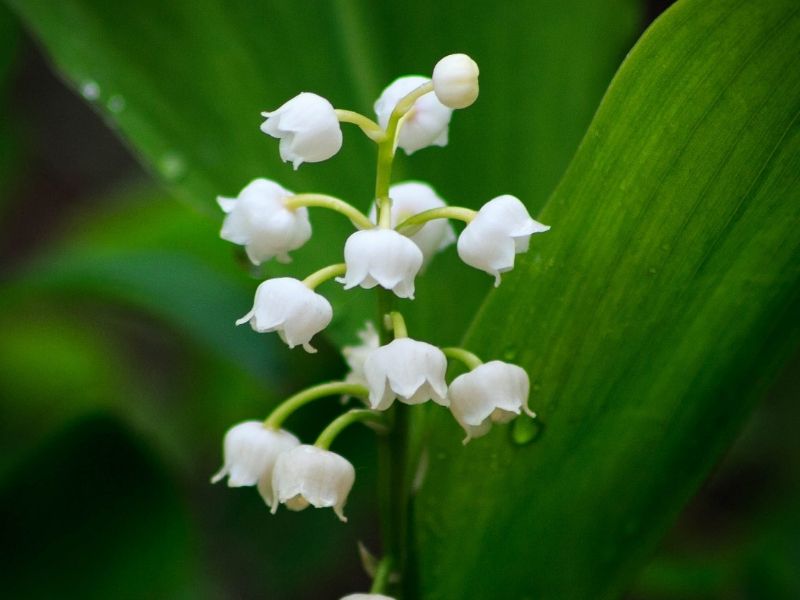Ligularias (Ligularia dentata), also known as the leopard plant or ragwort flower, is one of the most interesting perennials you can add to your garden.
There are quite a few varieties of this texture-rich plant with its heart-shaped dark green leaves and their flowers can vary from yellow to orange and flowers can form clumps or appear on tall spikes.
Leopard flowers can add lots of color and cheer to the dark shady parts of your garden and they look especially charming if you pair them with suitable companions.
In this guide, we are going to take a peek at some of the best ligularia companion plants to pair with these bright yellow flowers.
What to Plant with Ligularias
Ligularias are shade-loving perennials that can be grown in light to deep shade areas. These bushy plants should be established in moist but well-draining soil and it is best to never let them dry out too much.
The best companion plants for ligularias are other shade-loving species that flourish in moist and humid conditions.
Let’s take a detailed look at some of the top companions to grow with ligularia flowers to create an amazing landscape.
Coral Bells

Coral bells (Heuchera) are some of the most popular shade-loving perennials in ornamental gardens. These evergreen plants are very useful as ground covers, garden fillers, and border plants. They produce dense shrubs with showy flowers on tall spikes.
Coral bells are mostly grown for their vibrant foliage colors. These plants come in various shades like dark green, light green, burgundy, pinkish red, copper red, deep purple and so much more.
Heucheras also produce tiny flowers on tall spikes that can add lots of texture to your garden from late spring to summer.
These plants will flourish in shade garden beds with moist soil that can drain freely.
They are especially good Ligularia bottle rocket companion plants because this variety of leopard plants also produces flowers on tall spikes that look very similar to the flowers of coral bells.
When you are pairing bottle rocket ligularias with coral bells, it is best to establish the ligularias in the back or to plant these flowers next to one another. This way the taller ligularias won’t obscure your view of the beautiful colorful coral bell leaves.
Jacob’s Ladder
Jacob’s ladders (Polemonium reptans) are also good companions to add to your garden bed because they will add lots of color to your garden with their light green leaves and bright blue flowers. The tall plants will also add lots of texture to your garden and they are ideal filler plants to keep your garden bed nice and full.
These hardy perennials can easily be scorched by direct sun. They should be grown in partial shade and they need to be planted in moist soil that isn’t too soggy.
We recommend you pair this plant with britt-marie crawford ligularias because the vivid yellows will look rather striking next to the deep blues.
These ligularia britt-marie crawford companion plants should be positioned in the front of your garden because they are shorter with a maximum height of just 36 inches.
Astilbe

Astilbe flowers (Astilbe), also known as false goat’s beard, false bucks beard, or Chinese astilbe, is also a great plant to pair with ligularia varieties like bottle rocket ligularias because the fine texture of the bright feather-like leaves will complement the tall yellow spiky flowers of ligularias very well.
These companion plants come in a wide range of flower colors such as white, pink, deep red, soft lavender, and violet. The yellow ligularias will look charming alongside any of these colors.
Astilbes grow very well in cool shady areas and they prefer nutrient-rich soil that is kept moist but not too wet.
Because both of these plants are similar in height, you can mix and match them all over your garden for an interesting display of color and texture.
Lily-of-the-Valley

Lily of the valley (Convallaria majalis) is another great companion plant to include in your shade gardens. This plant has beautiful bright green leaves that can keep your garden nice and vivid throughout the year. It also produces striking yet delicate bell-shaped white flowers that can add lots of charm to your garden.
Lily of the valley grows very well in moist soil in a shaded spot. They will gradually spread all over your garden to form dense clumps of foliage.
This beautiful plant should be grown in front of your ligularias because they only grow up to 18 inches tall. The bright foliage will add a little bit more vibrancy to the dark green bases of ligularias if they are grown in the front of your garden.
What NOT to Grow with Leopard Plants
Leopard plants won’t develop well in hot, dry, and sunny areas in your garden. Sun and drought-loving plants, on the other hand, won’t grow well in shaded areas in your garden.
It is best not to pair ligularias with plant species like sage, bee balm, vegetable plants, berry plants, or other species that require lots of direct sunlight to flourish.
Because ligularias require plenty of moisture, you should also avoid pairing them with drought-tolerant species like roses, marigolds, or black-eyed susans.
Final Thoughts
Ligularias can grow very well with any moisture-loving shade plants including coral bells, astilbes, Jacob’s ladder, and Lily of the valley. When you mix these plant species in your garden beds you will create a very interesting display of color and texture.
See more:
*image by elenarostunova/depositphotos







